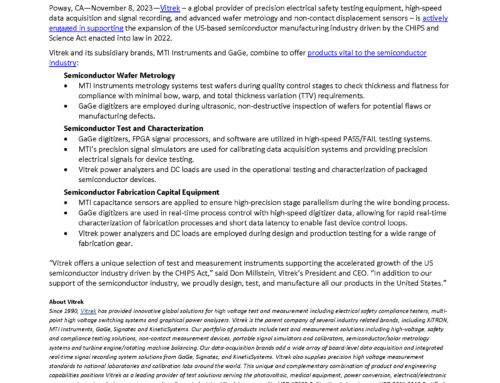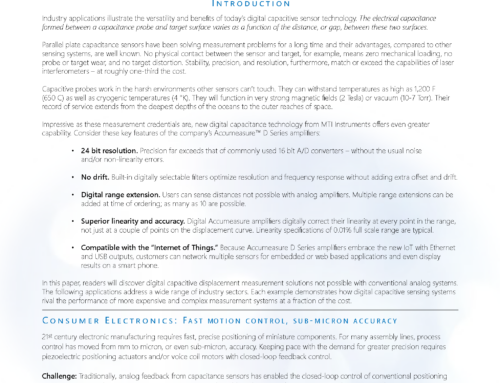Wafer backgrinding is the first step in semiconductor packaging, the process of encasing one or more discrete semiconductor devices or integrated circuits (IC) for protection. Known also as wafer thinning or wafer lapping, backgrinding reduces wafer thickness to allow stacking and high-density IC packaging. Wafer thickness also determines package height, an important consideration as smartphones, laptops, and other electronic devices become thinner. With MEMS, wafer thinning also controls the proof mass for devices such as accelerometers or the diaphragm thickness for pressure sensors.
Etching the surface of the wafer produces the IC but grinding the backside is what produces the wafer’s desired thickness. During backgrinding, the wafer is placed on rotary table. The backside of the wafer faces downward toward a lapping surface, which rotates and removes unwanted material. This process ensures that only the proper amount of material is removed. A typical semiconductor wafer may have a starting thickness of 775 µm, but the amount of material removed varies by device type.

Source: Semantic Scholar
For example, the thickest wafers are used for logic gates and are 100 µm thick. DRAM memory usually requires semiconductor wafers with a thickness of 50 µm instead. MEMS memory is typically around 30 µm thick. Backgrinding removes a precise amount of material to achieve the desired thickness, but it also causes damage to the wafer’s surface. That’s why polishing is also used. This description of the wafer backgrinding process is high-level, but the entire fabrication process is very tightly controlled.
Wafer Thickness Measurements
Highly accurate measurements are an important part of this process. This includes not just thickness, but also total thickness variation (TTV), bow, warp, sori, site and global flatness. For example, before lithography (etching) occurs, measurements of thickness, TTV and center thickness are made. Otherwise, the monetary value that is added to the wafer through patterning can become a form of manufacturing waste. Semiconductor wafers vary in cost, but a finished 300 mm wafer can be worth thousands of dollars.

Source: MTI Instruments
Companies that make wafer backgrinding machines also need to make highly accurate measurements. For the users of this equipment, it’s important to determine starting thickness so that backgrinding can remove the right amount of material for a 100-µm thick logic gate, a 50-µm DRAM memory, or 30-µm thick MEMS memory. Similarly, vendors that sell wafers should perform high-resolution measurements before shipping them, and customers who buy wafers might measure them upon receipt. MTI Instruments products play a crucial role for manufacturers requiring these highly precise measurements.
Laser Interferometers vs. Capacitance Gauges
Laser interferometers can make high-resolution measurements, but they provide relative readings. That means an operator must calibrate the interferometer to a known thickness before use. The operator can observe the change in height after measurement begins, but the height of the starting point remains unknown. By contrast, capacitance gauges provide absolute measurements instead of relative ones for greater absolute accuracy. Capacitance gauges are also less expensive and available as off-line devices.
MTI Instruments’ Proforma 300i and 300iSA systems are capacitance gauging measurement tools that cost less than laser interferometers and support quality checks earlier in the manufacturing process. These tabletop systems can be used off-line and are available in manual (300i) and semi-automated configurations (300iSA). Both capacitance-based systems can also expand the applications for quality control across the semiconductor supply chain.

MTI Semi-Automated Proforma 300iSA Thickness Metrology Tool (Left)
MTI Proforma 300 Manual Thickness Tool (Right)
Source: MTI Instruments
Thickness Measurements Less Than a Micron
MTI’s Digital Accumeasure product can also be used to measure the thickness of semiconductor wafers. This capacitance-based system is a stand-alone amplifier with non-contact probes. It can be integrated into a customer’s measurement processes or OEM systems, and the digital output simplifies integration. The Digital Accumeasure product provides highly accurate measurements of thickness, TTV, bow, and warp. Calibration is easy, digital filtering is user-adjustable and selectable, and thickness measurements can be sent to a standard PC running MTI’s Digital Accumeasure display program.

Four-channel MTI Accumeasure D with two Push-Pull probes can measure wafer thickness non-contact
Source: MTI Instruments

MTI Push-Pull Non-Contact Probe
Source: MTI Instruments
To learn more about our solutions for semiconductor wafer measurement, contact MTI Instruments.


